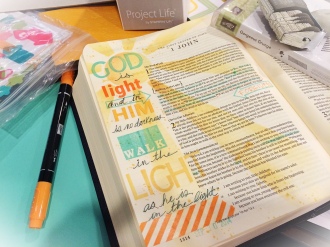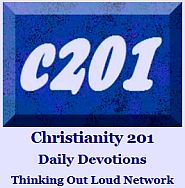This material was written for another audience, but although it may seem rather basic, deserves sharing here as well…
A Library for Christian Growth
The internet is great … for some things. But have you ever wished you could pick up an actual book and see the information you want displayed in a different form?
Lots of people do. Print books — both in general and in the Christian marketplace in particular — have had a strong year. Print is making a serious comeback. But if you wanted to have a shelf containing the best of the best, where would you start? Here are some ideas:
The Bible – Everyone reading this should have a text copy of the Bible in their home.
A Study Bible – While no single study edition will tell you everything you want to know about every Bible passage, one good one will at least get you started in the right direction and demonstrate the depth of what’s available to learn when you’re prepared to dig a little deeper.
Concordance – People still ask for these, but honestly, this is one area where I think Christian publishers and booksellers are prepared to concede a point to computers. They’re fast and they’re geared to whichever translation is your favourite. Furthermore, stores no longer sell Bible software as much, as the online equivalents — such as BibleGateway.com are free!
Bible Handbook – This is a book which has one chapter for each of the 66 core Biblical books, presented in the same order. It’s an overview of all the major people, places and activities in the Bible’s big-picture narrative.
Reader’s Version – This is a more recent product genre which can eliminate the need for a Bible handbook (though not entirely.) It presents the Bible as one continuous story without books, chapters and verses. The best-known is The Story which uses either NIV or NKJV text.
One Volume Commentary – This is like a Bible handbook on steroids. It gets you into verse-by-verse explanations and connects you with other related passages. Always hardcover, and about the size of the New York City Telephone Directory, circa 1980.
Individual Commentary – Got a particular book of the Bible you’d like to explore in great depth? For lay-people (non-academics or people not in vocational ministry) there are a number of series worth checking out including the Tyndale Commentary series (IVP), The Bible Speaks Today series (IVP), The Life Application series (Tyndale) and the Daily Study Bible series (William Barclay, John Knox Press). (For pastors and scholars we also keep two books on the shelf describing the best academic titles in detail.)
Bible Atlas – I can remember as a kid not having much interest in those maps of Paul’s missionary journeys or the location of the ten tribes of Israel, but now I see the need for these to a greater degree.
Bible Dictionary – Usually a larger hardcover book, Bible dictionaries let you look up words that are in the Bible and tells you what they mean. Obvious, maybe, but remember you won’t find the word trinity inside because it’s not a Biblical word.
Theological Dictionary – For those who want to have an entry for trinity and don’t mind missing out on the entries in a Bible dictionary. Not as popular. If you want to keep going down this road, there are also Philosophical Dictionaries and Dictionaries of Religion.
Devotional – At a certain point a lot of the study books listed here become all about information whereas the spiritual formation process should be all about transformation. Dictionaries and study Bibles provide all the head knowledge you need, but the message of Jesus is also meant to touch hearts.
Book of Customs in Biblical Times – I’ve added this toward the bottom because I see it is used in the chart (below) I wanted to include. However, these now take many different forms as people grow increasingly interested in the overall situation (politically, culturally, and in the understanding of key words and phrases) during the life and ministry of Jesus, in a category called “Hebraic Roots.”
Biographies – Every Christian should at some point read about the life of William and Catherine Booth, founders of The Salvation Army. Then there are 20th Century people like Corrie Ten Boom (The Hiding Place), Nicky Cruz and David Wilkerson (The Cross and the Switchblade), Don Richardson (Peace Child); but also older stories of people like Johann Sebastian Bach, John Wesley, Dorothy Sayers, or William Wilberforce.
Christian Living – Finally, here at the bottom of the list, is the catch-all category that Christian publishers use to describe the general books by today’s top authors as well as some classic writers. This list is already longer than I intended, but in the future we’ll recommend some key authors and books which should be part of your library.
Footnote: In the article, I made a very general statement about Study Bibles. Please note that in the case of the Life Application Study Bible (available in five different translations) the approach is quite different. Application notes are more devotional, and whereas a typical study Bible takes us into Bible times to understand context and meaning, the Life Application approach brings the Bible into our times and helps us apply it to our modern context and challenges.
The image at the top is from NavPress, a Christian publisher. I believe the lower image was created by Thomas Nelson, another Christian publisher.











































